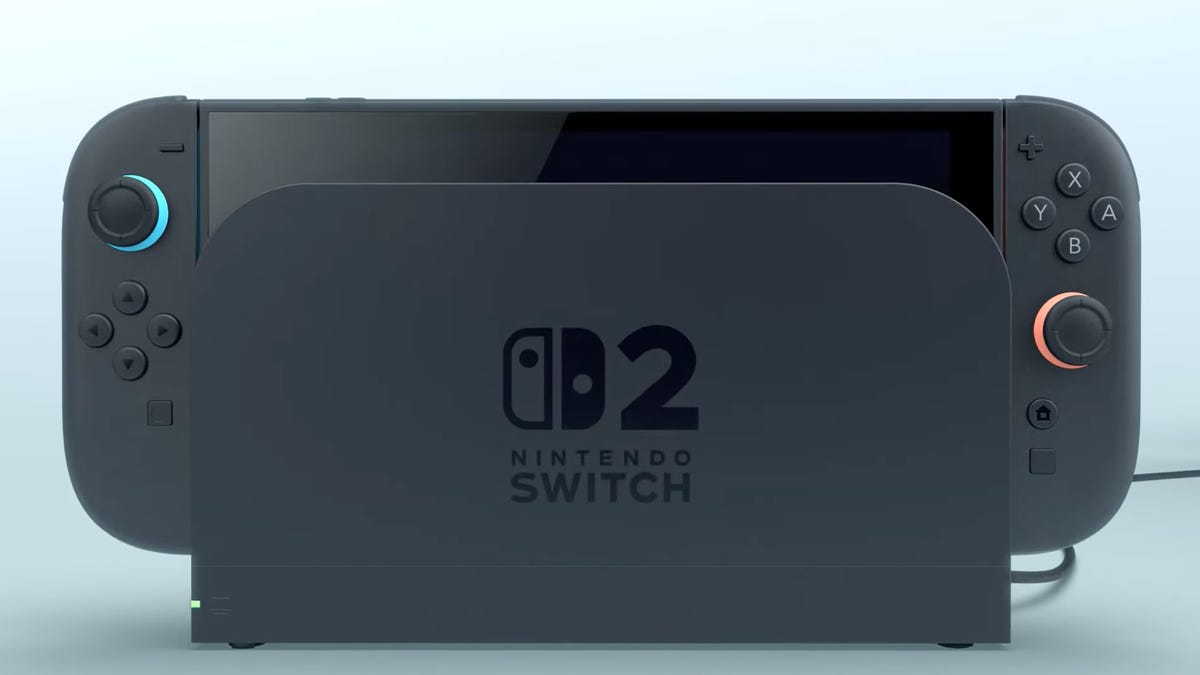Technologies
Google’s AI Overviews Explain Made-Up Idioms With Confident Nonsense
The latest meme around generative AI’s hallucinations proves you can’t lick a badger twice.

Language can seem almost infinitely complex, with inside jokes and idioms sometimes having meaning for just a small group of people and appearing meaningless to the rest of us. Thanks to generative AI, even the meaningless found meaning this week as the internet blew up like a brook trout over the ability of Google search’s AI Overviews to define phrases never before uttered.
What, you’ve never heard the phrase «blew up like a brook trout»? Sure, I just made it up, but Google’s AI overviews result told me it’s a «colloquial way of saying something exploded or became a sensation quickly,» likely referring to the eye-catching colors and markings of the fish. No, it doesn’t make sense.
The trend may have started on Threads, where the author and screenwriter Meaghan Wilson Anastasios shared what happened when she searched «peanut butter platform heels.» Google returned a result referencing a (not real) scientific experiment in which peanut butter was used to demonstrate the creation of diamonds under high pressure.
It moved to other social media sites, like Bluesky, where people shared Google’s interpretations of phrases like «you can’t lick a badger twice.» The game: Search for a novel, nonsensical phrase with «meaning» at the end.
Things rolled on from there.
This meme is interesting for more reasons than comic relief. It shows how large language models might strain to provide an answer that sounds correct, not one that is correct.
«They are designed to generate fluent, plausible-sounding responses, even when the input is completely nonsensical,» said Yafang Li, assistant professor at the Fogelman College of Business and Economics at the University of Memphis. «They are not trained to verify the truth. They are trained to complete the sentence.»
Like glue on pizza
The fake meanings of made-up sayings bring back memories of the all too true stories about Google’s AI Overviews giving incredibly wrong answers to basic questions — like when it suggested putting glue on pizza to help the cheese stick.
This trend seems at least a bit more harmless because it doesn’t center on actionable advice. I mean, I for one hope nobody tries to lick a badger once, much less twice. The problem behind it, however, is the same — a large language model, like Google’s Gemini behind AI Overviews, tries to answer your questions and offer a feasible response. Even if what it gives you is nonsense.
A Google spokesperson said AI Overviews are designed to display information supported by top web results, and that they have an accuracy rate comparable to other search features.
«When people do nonsensical or ‘false premise’ searches, our systems will try to find the most relevant results based on the limited web content available,» the Google spokesperson said. «This is true of search overall, and in some cases, AI Overviews will also trigger in an effort to provide helpful context.»
This particular case is a «data void,» where there isn’t a lot of relevant information available for the search query. The spokesperson said Google is working on limiting when AI Overviews appear on searches without enough information and preventing them from providing misleading, satirical or unhelpful content. Google uses information about queries like these to better understand when AI Overviews should and should not appear.
You won’t always get a made-up definition if you ask for the meaning of a fake phrase. When drafting the heading of this section, I searched «like glue on pizza meaning,» and it didn’t trigger an AI Overview.
The problem doesn’t appear to be universal across LLMs. I asked ChatGPT for the meaning of «you can’t lick a badger twice» and it told me the phrase «isn’t a standard idiom, but it definitely sounds like the kind of quirky, rustic proverb someone might use.» It did, though, try to offer a definition anyway, essentially: «If you do something reckless or provoke danger once, you might not survive to do it again.»
Read more: AI Essentials: 27 Ways to Make Gen AI Work for You, According to Our Experts
Pulling meaning out of nowhere
This phenomenon is an entertaining example of LLMs’ tendency to make stuff up — what the AI world calls «hallucinating.» When a gen AI model hallucinates, it produces information that sounds like it could be plausible or accurate but isn’t rooted in reality.
LLMs are «not fact generators,» Li said, they just predict the next logical bits of language based on their training.
A majority of AI researchers in a recent survey reported they doubt AI’s accuracy and trustworthiness issues would be solved soon.
The fake definitions show not just the inaccuracy but the confident inaccuracy of LLMs. When you ask a person for the meaning of a phrase like «you can’t get a turkey from a Cybertruck,» you probably expect them to say they haven’t heard of it and that it doesn’t make sense. LLMs often react with the same confidence as if you’re asking for the definition of a real idiom.
In this case, Google says the phrase means Tesla’s Cybertruck «is not designed or capable of delivering Thanksgiving turkeys or other similar items» and highlights «its distinct, futuristic design that is not conducive to carrying bulky goods.» Burn.
This humorous trend does have an ominous lesson: Don’t trust everything you see from a chatbot. It might be making stuff up out of thin air, and it won’t necessarily indicate it’s uncertain.
«This is a perfect moment for educators and researchers to use these scenarios to teach people how the meaning is generated and how AI works and why it matters,» Li said. «Users should always stay skeptical and verify claims.»
Be careful what you search for
Since you can’t trust an LLM to be skeptical on your behalf, you need to encourage it to take what you say with a grain of salt.
«When users enter a prompt, the model just assumes it’s valid and then proceeds to generate the most likely accurate answer for that,» Li said.
The solution is to introduce skepticism in your prompt. Don’t ask for the meaning of an unfamiliar phrase or idiom. Ask if it’s real. Li suggested you ask «is this a real idiom?»
«That may help the model to recognize the phrase instead of just guessing,» she said.
Technologies
Disney Exec Says ESPN Outage on YouTube TV May ‘Go for a Little While’
YouTube TV subscribers will miss college football on ESPN, ABC and conference networks for the third weekend straight.

More than two weeks after YouTube TV customers lost access to Disney’s streaming channels — including ABC, ESPN and the ACC and SEC networks — there is no sign of progress in the negotiations between the two entertainment giants.
At Disney’s fourth quarter earnings call on Thursday, Walt Disney CFO Hugh Johnston didn’t offer specifics on the ongoing negotiations, instead noting that «in terms of our (financial) guidance, we built a hedge into that (the YouTube TV outage), with the expectation that these discussions could go for a little while.»
Disney CEO Bob Iger ended the call on a more positive note, saying, «While we’ve been working tirelessly to close this deal and restore our channels to the platform, it’s also imperative that we make sure that we agree to a deal that reflects the value that we deliver.»
The disagreement causing the ABC and ESPN outage stems from the «carriage fee» that YouTube TV pays Disney to broadcast its channels. Disney has faced similar negotiating standoffs with other broadcasters in recent years, including an earlier 2021 outage on YouTube TV that was resolved in two days.
Don’t miss any of our unbiased tech content and lab-based reviews. Add CNET as a preferred Google source.
Disney says YouTube TV isn’t paying enough to stream its channels. YouTube TV, owned by Google, has the most subscribers among all internet TV providers, with over 9 million. Hulu, owned by Disney, is second with 4.3 million subscribers through its Hulu + Live TV offering.
«The deal that we have proposed is equal to or better than what other large distributors have already agreed to,» Iger also said Thursday.
While the two sides wrangle over the fees, they risk further losses. Nearly a quarter of YouTube TV subscribers (24%) have canceled or intend to cancel their subscription because the service «no longer delivers the core content they signed up for,» according to a survey cited by Variety.
Disney, meanwhile, is losing an estimated $30 million in revenue per week while its channels are unavailable on YouTube TV, according to a Morgan Stanley research note cited by Variety. That’s a significant chunk of change because each week Disney’s networks are dark on YouTube TV, Disney’s adjusted earnings per share drop by 2 cents, analysts say.
When will ESPN, ABC and other Disney channels return to YouTube TV?
Disney is no stranger to carriage fees feuds, and as with previous disputes, negotiations are under wraps, and how long it will continue is anyone’s guess. Disney’s contract conflict with Sling TV in 2022 lasted just two days, while the one with Spectrum/Charter in 2023 wasn’t resolved for 10 days.
Disney’s contract conflicts from previous years were mostly resolved in a week or two, but Google has considerably more bargaining power than those other platforms.
Thursday marked 14 days that Disney’s channels had been blacked out on YouTube TV — a day longer than the Disney outage on DirectTV last year. How much longer this outage will continue is unknown, but the Morgan Stanley analysts who pegged Disney’s weekly losses at $30 million sounded an optimistic note in predicting that the outage will be resolved later this week.
When a deal is reached between Disney and YouTube, the missing channels will return «in a matter of hours,» according to Variety.
What are Disney and YouTube TV saying about the dispute?
On Oct. 30, YouTube TV posted on X, «Members, when we renew our contracts with network partners, we advocate for fair pricing to offer you the best TV experience.»
«Google’s YouTube TV has chosen to deny its subscribers the content they value most by refusing to pay fair rates for our channels, including ESPN and ABC,» Disney said in a statement to CNBC.
In a memo to employees on Oct. 31 that was also reported by CNBC, Disney accused YouTube TV of deleting «previously recorded shows and events from their subscribers’ libraries.»
«YouTube TV and its owner, Google, are not interested in achieving a fair deal with us,» Disney Entertainment co-chairs Dana Walden and Alan Bergman and ESPN Chairman Jimmy Pitaro said in the memo. «Instead, they want to use their power and extraordinary resources to eliminate competition and devalue the very content that helped them build their service.»
Disney is also asking its viewers to ask YouTube TV to bring back its broadcasting via the keepmynetworks.com site.
Which Disney channels were removed from YouTube TV?
Sports fans aren’t the only viewers left sidelined by the loss of Disney channels from YouTube TV. Here are all the channels that have been removed from the streaming service:
- ABC
- ABC News Live
- ACC Network
- Baby TV Español (Spanish Plan)
- Disney Channel
- Disney Junior
- Disney XD
- ESPN
- ESPN Deportes (Spanish Plan)
- ESPNews
- ESPNU
- ESPN2
- Freeform
- FX
- FXM
- FXX
- Localish
- Nat Geo
- Nat Geo Mundo (Spanish Plan)
- Nat Geo Wild
- SEC Network
How can YouTube TV subscribers watch football games during the Disney outage?
YouTube TV subscribers with an aerial TV antenna can still watch Monday Night Football and college football games on ABC if they live close enough to receive an over-the-air broadcast signal from a local ABC affiliate.
Other than that, the only real option for viewers who want to watch all of the college football and basketball games this weekend and Monday Night Football at home is to subscribe to another service that provides ABC and ESPN, including ESPN+, Sling TV, Hulu + Live TV, Fubo or DirecTV Stream.
Sling TV offers a $5 Day Pass that could be a good option for viewers who want to watch one specific game, as well as a $10 Weekend Pass that would give you college football and basketball games for both days.
For those looking to find football games at local establishments, this handy app can help you find places that are showing the games.
YouTube TV has given $20 bill credits to subscribers
YouTube TV had promised subscribers a $20 credit for the streaming service if the Disney channels outage continued for an extended period, and on Sunday, the streaming service announced the details of that credit.
Some YouTube subscribers receive the $20 credit automatically, and others need to claim it online. According to a YouTube spokesperson, subscribers who pay with Google Play billing or through their mobile service should receive the $20 credit automatically.
If you need to claim the $20 credit, you should have received an email from YouTube TV. To redeem your the credit, follow these steps:
- Log in to YouTube.com with a web browser
- Click or tap on your profile picture
- Click or tap Settings.
- You can also directly browse to the URL at https://tv.youtube.com/settings/service_updates.
- At the bottom of the menu on the left, select Updates.
- On the following screen, which explains the Disney channels outage, click or tap the blue button marked Claim Credit.
Emails from YouTube TV started going out Sunday night and several Reddit posters have already reported receiving the $20 credit. All of the credits for YouTube TV subscribers should be issued by Wednesday, Nov. 12, according to Variety.
The $20 credit will be applied to your next billing cycle.
We asked YouTube TV if additional billing credits would be offered to subscribers if the outage continues. A spokesperson replied, «This is a situation that is evolving, and we will let subscribers know of future additional credit offers. Our main priority is to reach an agreement that restores Disney’s content to YouTube TV.»
Correction, Nov. 5: An earlier version of this story failed to note that Sling TV day and weekend passes can be used to watch local ABC affiliates only in certain markets.
Technologies
Nintendo Says Newest Switch 2 Update Didn’t Deliberately Brick Third-Party Docks
Third-party dongle docks appear to be failing after the 21.0.0 update.

Nintendo released a new Switch 2 firmware update on Tuesday that came with a few albeit not significant changes to the portable console. It appears, however, this update might have bricked some third-party docks for the console in the process.
Switch 2 owners on social media say their third-party docks are no longer working with their systems after downloading firmware update 21.0.0, as first reported by Kotaku on Thursday. It’s unclear what in the firmware may have caused the issue, but it does appear that it primarily affects dock dongles, which plug directly into the Switch instead of the typical cradle-style docks that require the console to be placed in them.
Nintendo says it doesn’t have any intention to hinder or invalidate third-party docks.
«Nintendo Switch 2 outputs audio/visuals once it detects that it is docked into a Nintendo Switch 2 Dock. Nintendo Switch does the same, outputting audio/visuals once it detects that it is docked into a Nintendo Switch Dock,» the company said in an emailed statement to CNET.
Don’t miss any of our unbiased tech content and lab-based reviews. Add CNET as a preferred Google source.
What third-party Switch 2 docks are affected?
As of now, the only docks that appear to have issues are the third-party dongle docks. Standard docks and the official dock from Nintendo are fine.
Can these Switch 2 dock dongles be fixed?
It’s unclear if another Switch firmware update can address the problem. It’s also unlikely that the manufacturers of these docks will be able to provide a firmware update to address any problems.
This is not the first time third-party docks have had compatibility issues with a Switch console. In 2018, Nintendo released the 5.0.0 update for the original Switch, which not only caused some docks to stop working, it also led to consoles using those docks having problems. A 2019 report from Wired found that some third-party docks tried to emulate the same quick connections to the USB-C port on the Switch like with the official Nintendo dock. If the hardware has a slight manufacturing defect where the connections weren’t firmly connected, it could cause the USB-C power port on the Switch to fail.
Nintendo does advise Switch owners to use official Nintendo products for the system.
What else changed in the Switch 2 firmware update 21.0.0?
The latest Switch 2 firmware update went live on Tuesday and made a series of quality-of-life changes to the Switch 2, such as changing certain text in the settings to provide a better description of their functions; adding an option to cancel multiple software downloads at once; and adding icons on software to indicate whether it’s a physical or a digital version. This last change refers to the Game-Key Card feature for certain Switch 2 games that do not have the entire game on the cartridge and require downloading the game files.
Technologies
Metroid Prime 4 for Switch 2 Delivers the Biggest Evolution the Franchise Has Seen
The next chapter in the Metroid saga lands in December with a major shift for the series. Here’s everything we know.

Metroid Prime 4: Beyond seemed like it would never come out since it was first teased in 2017, but the newest adventure featuring Samus Aran is less than a month away. Nintendo released a trailer Friday that highlights the biggest changes coming to the series.
In Metroid Prime 4, Samus responds to a distress call from the Galactic Federation, which is under attack by a bounty hunter known as Sylux. A disaster happens, transporting her to the planet Viewros, and now she has to use her new psychic powers and some help from allies to survive the planet in order to find her way home.
Metroid Prime 4: Beyond Trailer
When does Metroid Prime 4 come out?
Metroid Prime 4 will be released on Dec. 4.
What consoles will Metroid Prime 4 be released on?
Metroid Prime 4 will be available for the original Switch for $60 and on the Switch 2 for $70. For those with the original Switch now, but who think they might get a Switch 2 for the holidays, the Switch version can be upgraded to the Switch 2 version for $10.
What’s new in Metroid Prime 4?
The biggest change in Metroid Prime 4 is the open world. Previous Metroid Prime games usually confined Samus to caverns, temples or a ship, but this time around, she’ll be able to explore the world of Viewros. To help her traverse across the world, Samus can ride her bike called Vi-O-La.
Samus is known for her arsenal of powerful weapons, but in Metroid Prime 4, she will have new psychic abilities. These abilities will let her manipulate energy and activate machinery with just her mind.
Scattered across Viewros are Galactic Federation troopers, whom Samus will rescue but also fight alongside. This marks one of the few times when Samus isn’t battling alien forces on her own.
Will the Switch 2 version have any unique features?
A new feature only available with the Switch 2 version of the game is mouse controls. Players can use a Joy-Con 2 as a mouse by placing it on a hard surface, which some gamers insist is the proper way to play FPS games. If that isn’t of interest, both Metroid Prime 4 versions will make use of the Joy-Cons motion controls or a compatible gamepad, such as the Switch 2 Pro Controller.
-

 Technologies3 года ago
Technologies3 года agoTech Companies Need to Be Held Accountable for Security, Experts Say
-

 Technologies3 года ago
Technologies3 года agoBest Handheld Game Console in 2023
-

 Technologies3 года ago
Technologies3 года agoTighten Up Your VR Game With the Best Head Straps for Quest 2
-

 Technologies4 года ago
Technologies4 года agoBlack Friday 2021: The best deals on TVs, headphones, kitchenware, and more
-

 Technologies4 года ago
Technologies4 года agoVerum, Wickr and Threema: next generation secured messengers
-

 Technologies4 года ago
Technologies4 года agoGoogle to require vaccinations as Silicon Valley rethinks return-to-office policies
-

 Technologies4 года ago
Technologies4 года agoOlivia Harlan Dekker for Verum Messenger
-

 Technologies4 года ago
Technologies4 года agoiPhone 13 event: How to watch Apple’s big announcement tomorrow
